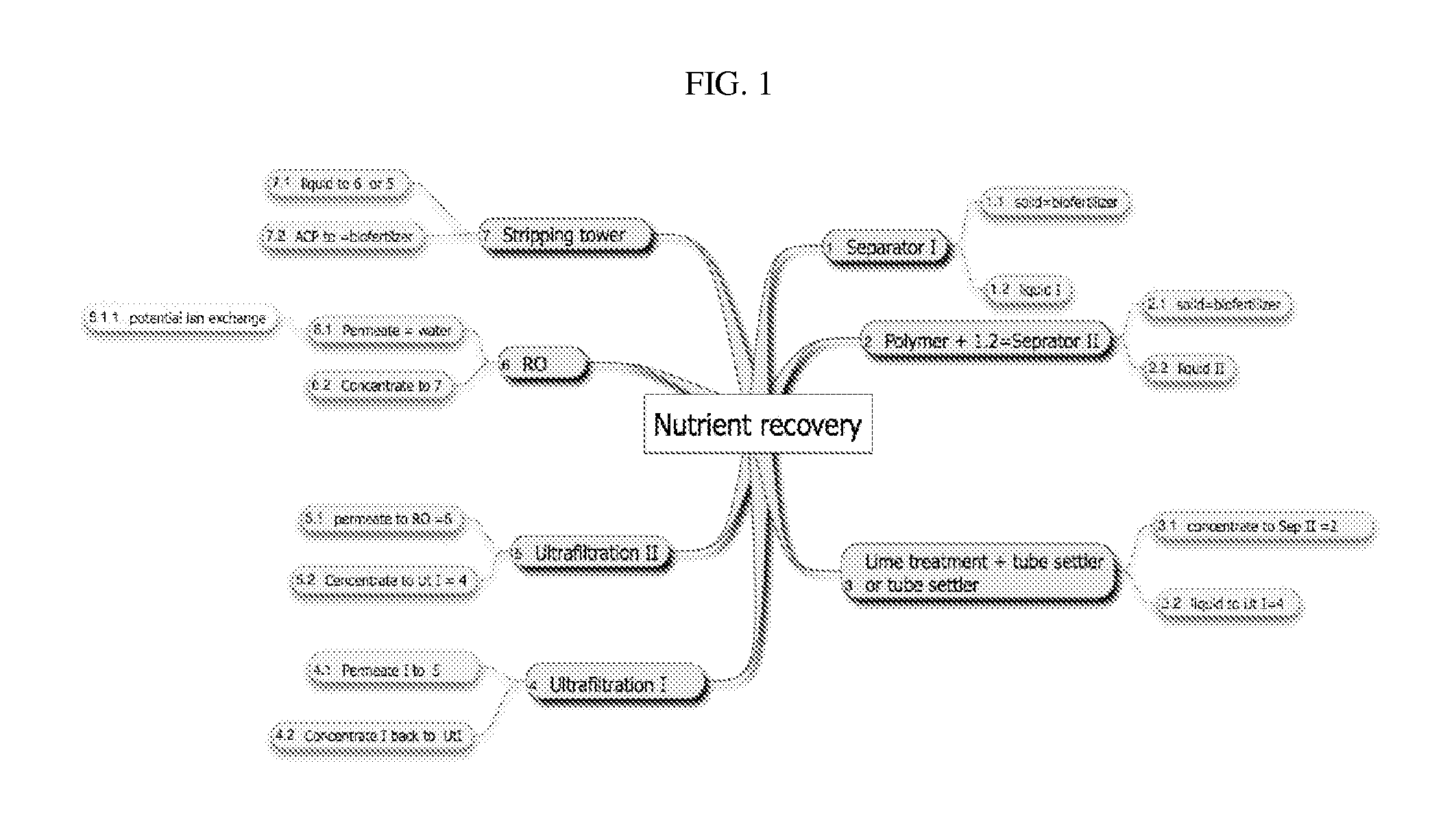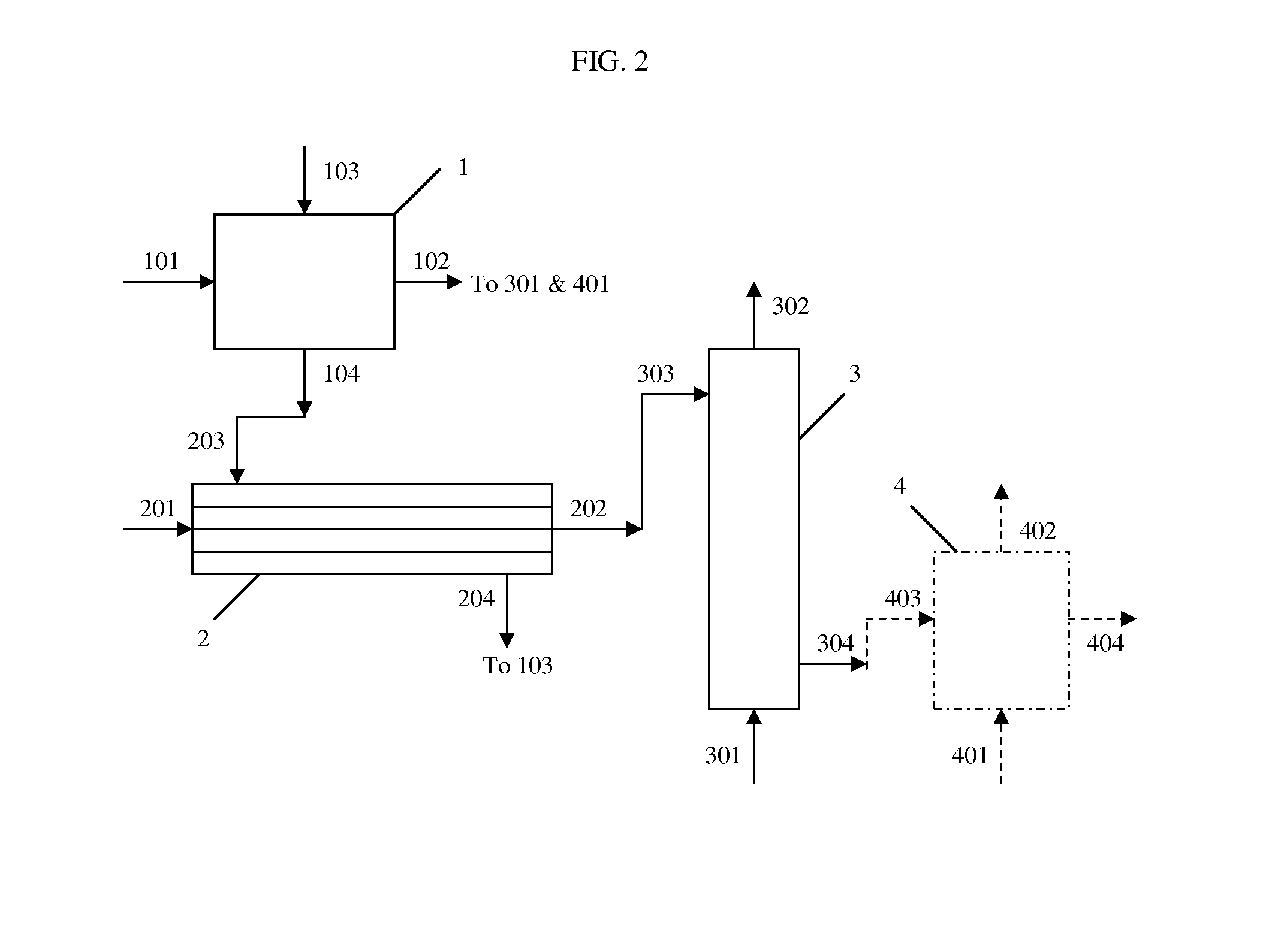Nutrient recovery methods and uses thereof
- Summary
- Abstract
- Description
- Claims
- Application Information
AI Technical Summary
Benefits of technology
Problems solved by technology
Method used
Image
Examples
example 1
Cationic Polymer Improves Solid Removal During Centrifugation of Digested Manure
[0120]Several CIBA® ZETAG® cationic polymers, such as ZETAG 7645 and ZETAG 7623, were used as flocculants for flocculation of digested manure slurry. These polymers are non-toxic ultra high molecular weight cationic polyacrylamide flocculants. Their typical structure is shown in the formula below. For this experiment, a polymer stock solution containing about 1% of polymer by weight was further diluted to 0.2% before its use in bench tests. Alternatively, the polymer solution (0.2% by weight) can be made by dissolving 40 g of ZETAG® 7623 into 20 L of tap water.
[0121]Two types of flocculation tests were conducted in this experiment: the batch jar flocculation test, and the pilot centrifuging test. In the batch jar test, 200 mL of uncentrifuged digested manure slurry was taken into a 500-mL beaker, and then a certain amount of polymer solution was added. After immediately mechanical agitation for about 10-...
example 2
Cationic Polymer Improves Nutrient Removal During Centrifugation of Digested Manure
[0129]This examples shows that cationic polymer not only facilitates solid removal, but also unexpectedly facilitates precipitation / recovery of certain nutrients, such as phosphate and nitrogen, during the solid-liquid separation process.
[0130]In the experiment above, ammonia and phosphate concentrations were also measured for the above-mentioned samples as shown in Table 1. Unexpectedly, the NH3 and PO43− concentrations in the polymer-assisted centrifuged samples were approximately 20% and 50% lower than those in the polymer-free centrifugation sample. This indicates that the addition of polymer also facilitates NH3 and PO43− removal from effluents during centrifugation.
example 3
Reduction of Settled Solids after Lime Treatment in Cationic Polymer-Assisted Solid-Liquid Separation
[0131]After polymer-assisted solid-liquid separation conducted under conditions similar to that of Example 1, the separated liquid portion was further subjected to lime treatment. The lime-treated samples were then poured into different glass tubes for settling. An exemplary glass tube used in this experiment was 37 mm in internal diameter and 295 mm in height (1:8 diameter to height ratio). Ammonia concentration in sample solutions was measured using an ORION ammonia probe. Phosphate concentration was determined by ion chromatography using Dionex ICS1000.
[0132]The results of lime treatment for samples after polymer-assisted centrifugation are shown in Table 2. The lime dosage used was between 0 to 20 g / L. The raw centrifuged effluent had a pH of about 7.54. In general, the pH in the lime-treated effluent increased with increasing lime dosage. For instance, pH was 9.40 for a sample t...
PUM
| Property | Measurement | Unit |
|---|---|---|
| Fraction | aaaaa | aaaaa |
| Fraction | aaaaa | aaaaa |
| Fraction | aaaaa | aaaaa |
Abstract
Description
Claims
Application Information
 Login to View More
Login to View More - R&D
- Intellectual Property
- Life Sciences
- Materials
- Tech Scout
- Unparalleled Data Quality
- Higher Quality Content
- 60% Fewer Hallucinations
Browse by: Latest US Patents, China's latest patents, Technical Efficacy Thesaurus, Application Domain, Technology Topic, Popular Technical Reports.
© 2025 PatSnap. All rights reserved.Legal|Privacy policy|Modern Slavery Act Transparency Statement|Sitemap|About US| Contact US: help@patsnap.com



